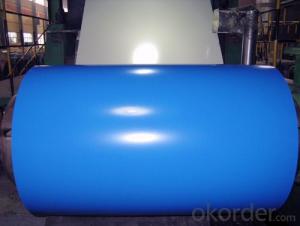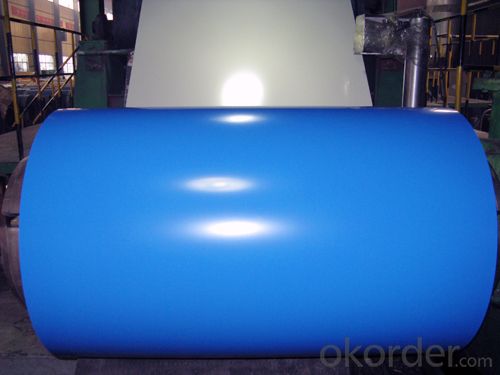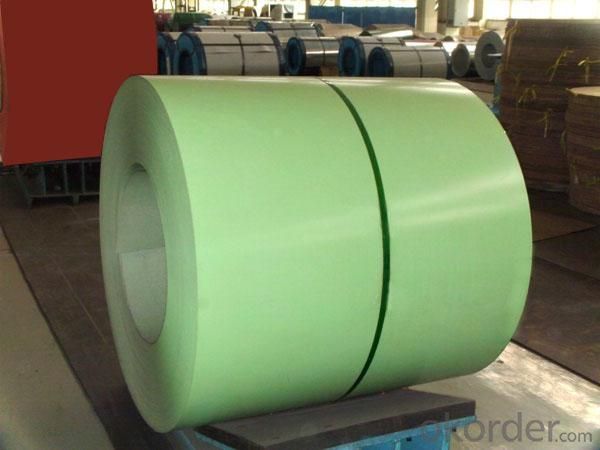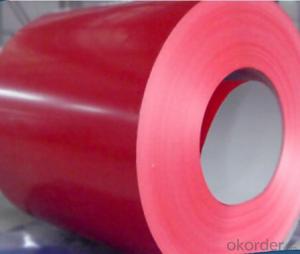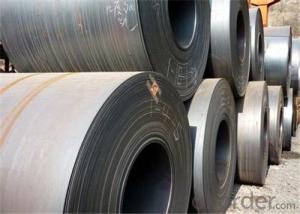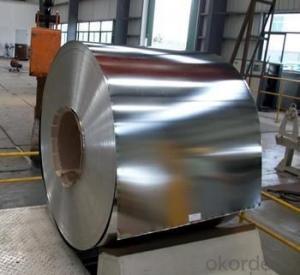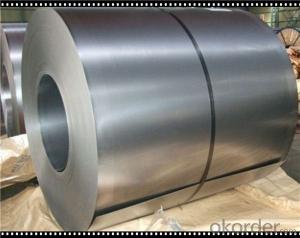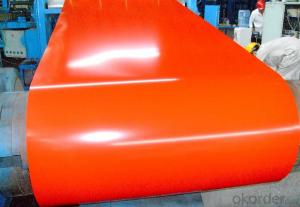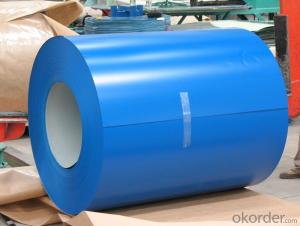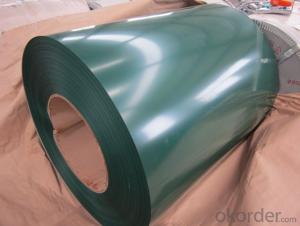Galvanised Steel Coils with ISO 9001:2008
- Loading Port:
- Nanjing
- Payment Terms:
- TT OR LC
- Min Order Qty:
- 4000 PCS
- Supply Capability:
- 40000 PCS/month
OKorder Service Pledge
Quality Product, Order Online Tracking, Timely Delivery
OKorder Financial Service
Credit Rating, Credit Services, Credit Purchasing
You Might Also Like
Galvanised Steel Coils with ISO 9001:2008 Details
| Standard: | AISI,ASTM,BS,DIN,GB,JIS | Grade: | SGCC |
| Place of Origin: | China (Mainland) | Width: | 700-1250mm |
| Thickness: | 0.13-0.8mm | Technique: | Cold Rolled |
| Application: | home appliances, constructions, building, machineries | Special Use: | High-strength Steel Plate |
| Length: | as customer's requirement | Certificate: | ISO9001, BV |
| surfact treatment: | galvanzied | Unit weight: | 3-5t/coil |
| OEM: | Accept | Zinc coated: | 30-180g/m2 |
Packaging & Delivery
| Packaging Detail: | GALVANISED STEEL COILS WITH ISO9001:2008 waterproof paper, galvanized steel covered and steel strip packed. |
| Delivery Detail: | 30 days after deposit |
Galvanised Steel Coils with ISO 9001:2008 Specifications
| Material | SGCC, DX51D+Z |
| Thickness | 0.13-0.8mm |
| Width | 750-1250mm |
| Zinc coated | 40-180g/m2 |
| Standard | ASTM,AISI,DIN,GB |
| Spangle | Zero Spangle, Regular Spangle, Small Spangle |
| Surface treatment | chromated and oiled, chromated and non-oiled |
| Technique | cold rolled galvanized |
| Grade | Prime |
| ID | 508mm or 610mm |
| Coild weight | 3-5MT/Coil or as your request |
| Quality | Softy , half hard and hard quality |
Galvanised Steel Coils with ISO 9001:2008 Pictures
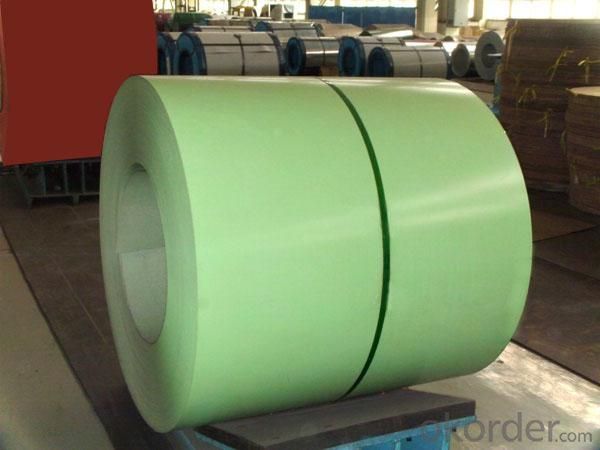
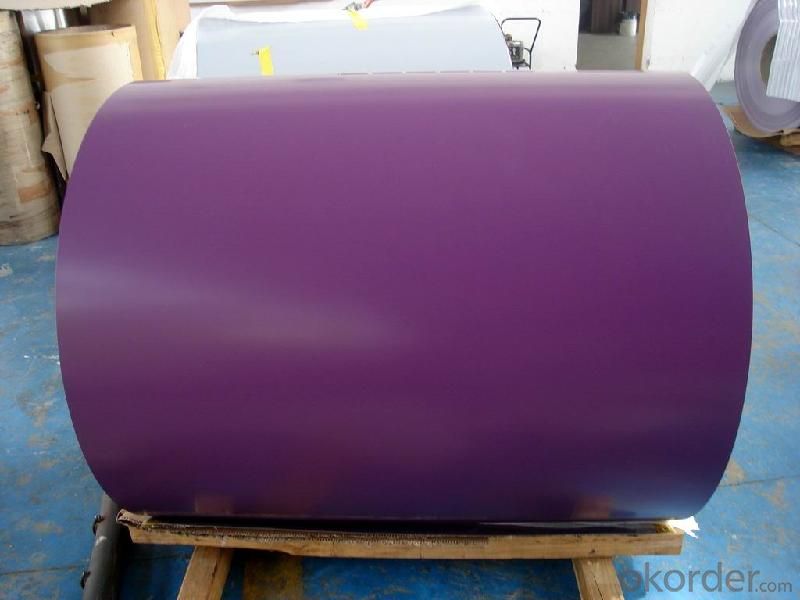
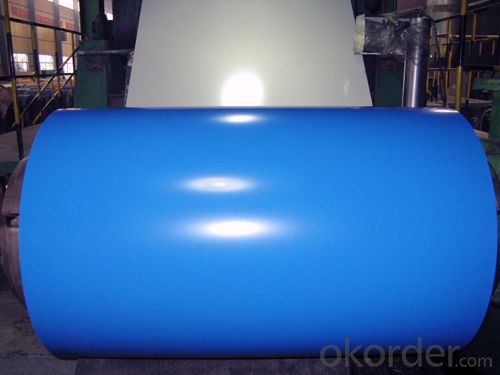
- Q: How are steel coils priced in the market?
- Steel coils are typically priced in the market based on various factors such as the current supply and demand dynamics, global steel prices, production costs, and market competition. Additionally, specific attributes of the steel coils, such as size, thickness, grade, and coating, can also influence the pricing. Overall, it is a complex process that involves analyzing multiple factors to determine the appropriate price for steel coils in the market.
- Q: What are the common methods of cutting-to-length steel coils?
- The common methods of cutting-to-length steel coils include shearing, slitting, and sawing.
- Q: How do steel coils compare to other materials in terms of strength?
- Steel coils are known for their exceptional strength and durability, making them one of the strongest materials available in the market. Compared to other materials, such as aluminum or plastic, steel coils exhibit superior strength and resistance to deformation or breakage. The high tensile strength of steel allows coils to withstand heavy loads, making them ideal for various industrial applications, including construction, automotive manufacturing, and the production of heavy machinery. Additionally, steel coils possess excellent fatigue resistance, meaning they can endure repeated stress and strain without losing their structural integrity. This strength advantage makes steel coils a preferred choice for applications where reliability and safety are of utmost importance.
- Q: How are steel coils used in the manufacturing of transportation equipment?
- Steel coils are used in the manufacturing of transportation equipment as they provide a durable and strong foundation for various components such as chassis, frames, and body panels. These coils are typically processed and shaped into specific forms to meet the design requirements of automobiles, ships, trains, and aircraft. The high tensile strength and ability to withstand heavy loads make steel coils an essential material in the transportation industry, ensuring the safety and reliability of the vehicles and equipment.
- Q: many sword sellers sell swords made of 440 and stainless, i know those are both totally **** for real swords. so are 1045, 1060, or 1095 good grades of steel for a sword?
- Carbon Steel is the most common, while most live-steel(designed for use) ready sword utilize on of the spring steels you mentioned. Hybrid steel like those used in the Slayer series seem neigh-indestructible. The steel should be strong enough to not notch on a strike, but flexible enough to flex when you bend it, lest it shatter on a hard blow.
- Q: Does SA use its own iron ore to produce steel for construction or do we rely on imports?
- There is a ludicrous mixture of the two at present. We export a large percentage of our steel to China predominantly but also to other regions then import what ever the shortfall is on the local market, often at inflated prices. The company I work for obtains all its steel from only one supplier, who we have shares in, and under the counter cash incentives are the order of the day, I keep myself above water by refusing the cash and sign no documents relating to those dealings, I'm not prepared to go to prison for a cash bonus.
- Q: is surgical steel or sterling silver belly button rings better for you? surgical is really cheap so its sketch and i justt dont want it to mess up
- Sterling silver is not meant for extended wear in body piercings, and should NEVER be worn in fresh or unhealed piercings - the silver will tarnish, and the tarnish can be deposited into your skin which causes it to turn gray or black. Silver can also cause allergic reactions for those who have nickel allergies. So it's okay to wear for a special occasion in a healed piercing, but has lots of nasty side effects if left in too long. As for the surgical steel: not all SS body jewelry is created equal! Lots of cheap steel body jewelry is made out of 316L Stainless steel, which is the minimum requirement for steel worn in healing/fresh piercings. Some people can wear this type of steel, but it can (and does) irritate and cause allergic reactions for others. Personally, I will only wear 316LVM ASTM F-138 Implant Grade Steel, which is the same type of material that doctors use when they put pins and plates in your body during surgery. It is the highest quality steel you can get, and will usually cost a bit more, but as someone with sensitive skin I am not willing to risk getting an allergic reaction from sub-par jewelry. Also, implant-grade jewelry is most often INTERNALLY-THREADED, which means that the threads are concealed inside the jewelry and do not come in contact with your skin. EXTERNALLY-THREADED jewelry has the threads on the outside, and inserting it into your piercings is pretty much the equivalent of dragging a screw through your navel. Whatever grade of steel you decide to go with, make sure the threads are on the inside!
- Q: Does anyone know what colour steel is?How hard steel is?The density of steel?Conductivity of steel? (Heat and electricity)Reactivity of steel?Melting and boiling points of steel?And the malleability and ductility of steel?Ive looked all over the net and i cant find anything. Can someone please answer these questions or give me a website?THANKS!
- It is usually a grey color, more silver when freshly scratched. Every one of the other questions can range based on the quality of the steel and other variables such as thickness. That's more than likely the reason you couldn't find any info on it. Its hardness is based on quality, for example regular steel is softer than Mild steel. It can be a thin sheet or a thick plate (which could then be changed to a tube Circle or square) etc
- Q: What are the different coil surface finishes?
- There are several different coil surface finishes, including mill finish, brushed finish, embossed finish, and coated finish.
- Q: How are steel coils inspected for flatness using optical sensors?
- Steel coils are inspected for flatness using optical sensors by employing a system known as optical flatness measurement. This method involves the use of high-resolution cameras that capture images of the steel surface as it passes through the inspection line. Firstly, the steel coil is unwound and passed over a roller table. As it moves, the optical sensors are positioned above the coil to capture images at regular intervals. These sensors typically consist of a combination of laser line projectors and high-resolution cameras. The laser line projectors emit a thin, straight line of laser light across the width of the steel coil. This laser line acts as a reference plane for measuring the flatness of the steel surface. The high-resolution cameras then capture images of the laser line as it interacts with the steel coil. The captured images are then analyzed using advanced image processing algorithms. The algorithms analyze the deformation of the laser line on the steel surface and calculate the deviations from the flat reference plane. These deviations indicate any irregularities or variations in the flatness of the steel coil. The optical sensors can accurately detect even the slightest deviations in flatness, measuring them in micrometers or even smaller units. This enables manufacturers to identify and rectify any flatness issues in the steel coils before further processing or shipment. In addition to measuring flatness, optical sensors can also detect other surface defects such as waviness, scratches, or dents. By incorporating multiple cameras and laser line projectors from different angles, a comprehensive inspection of the steel coil's surface can be achieved. Overall, the use of optical sensors for inspecting steel coil flatness provides a fast, accurate, and non-contact method. By detecting and rectifying any flatness issues early in the production process, manufacturers can ensure the delivery of high-quality steel products to their customers.
Send your message to us
Galvanised Steel Coils with ISO 9001:2008
- Loading Port:
- Nanjing
- Payment Terms:
- TT OR LC
- Min Order Qty:
- 4000 PCS
- Supply Capability:
- 40000 PCS/month
OKorder Service Pledge
Quality Product, Order Online Tracking, Timely Delivery
OKorder Financial Service
Credit Rating, Credit Services, Credit Purchasing
Similar products
Hot products
Hot Searches
Related keywords
